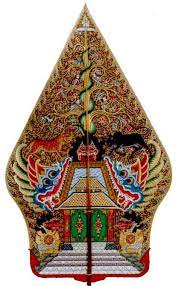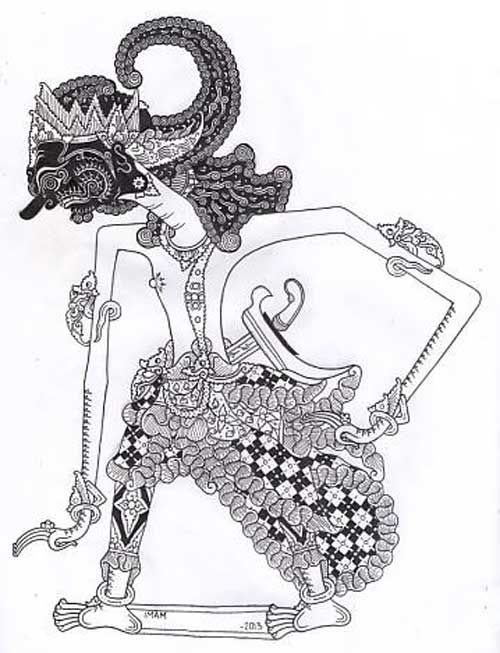
Wayang kulit is a traditional Indonesian art which mainly develops in Central and East Java. In Javanese beliefs and literature, wayang kulit was created by Sunan Kali Jaga, a descendant of the Ponorogo nobleman Arya Wiraraja who is also Wali Songo. Where Sunan Kalijaga saw the Javanese people who liked Wayang Beber performances, in Islam painting on paper is considered Haram, so Sunan Kalijaga modified the Wayang character material which was originally made from Daluang (Ponoragan paper) was changed to Goat Skin, besides that it was used as a symbol of Islamic religion.
Wayang comes from the word “Ma Hyang” which means towards a spiritual spirit, god, or God Almighty. There are also those who interpret wayang as a Javanese term which means “shadow”, this is because the audience can also watch the puppet from behind the screen or only its shadow. Wayang kulit is played by a puppeteer who is also the narrator of the dialogues of the wayang characters, accompanied by gamelan music played by a group of nayaga and songs sung by singers. The puppeteer plays the shadow puppet behind the screen, which is a screen made of white cloth, while an electric light or oil lamp (blencong) is highlighted behind it, so that the audience on the other side of the screen can see the shadow of the puppet falling onto the screen. To be able to understand the wayang story (play), the audience must have knowledge of the wayang characters whose images appear on the screen.
In general, wayang takes stories from the Mahabharata and Ramayana texts, but it is not limited to these standards, the ki dalang can also play carangan (composition) plays. Some of the stories are taken from the Panji story, and Spiritual stories from Islam, Christianity, Hinduism, and buddhism.
The wayang kulit show was recognized by UNESCO on November 7, 2003, as an amazing cultural work in the field of beautiful and valuable narrative stories and heritage (Masterpiece of Oral and Intangible Heritage of Humanity). Wayang kulit is more popular in central and eastern Java, while wayang golek is more often played in West Java.
Wayang Madya is one type of wayang performance art that has long been submerged. Even though it was never popular in Surakarta, as Pigeaud argued (Pigeaud, 1967), it was staged at the Mangkunegaran Palace in the 19th century by taking on the play Jayabaya (Claire Holt, 1967). The form of Wayang Madya is a combination of wayang kulit (Purwa) and wayang gedhog. The top to the middle takes the form of wayang Purwa, while the middle to the bottom takes the form of Wayang Gedhog (Sayid, 1981). The source of Wayang Madya material is also a bridge that connects the materials of the two wayang traditions. If Wayang Purwa takes the story of the gods up to the Pandawa family and Wayang Gedhog takes the story of Panji from Jenggala with the daughter of Kediri (Uhlenbeck, 1964), then Wayang Madya takes the story of the grandchildren of the Pandavas up to PanJI (Brandon, 1970). You can also tell the story from the death of King Yudayana until the time when King Jayalengkara ascended the throne in 765 C -1052 C (863 M 1130 M) (Kats, 1924).
Middle puppets are shadow puppets created by Mangkunegara IV as a continuation of the story of Wayang Purwa and Wayang Gedog. The middle wayang story is a transition from the Purwa story to the Panji story. One of the well-known Wayang Madya stories is the Anglingdarma story. Wayang madya never developed outside of the Pura Mangkunegaran environment.
The middle wayang story tells from the death of Prabu Yudayana until Prabu Jayalengkara ascends the throne. The story of Wayang Madya was written by R. Ngabehi Tandakusuma with the title Pakem Ringgit Madya which consists of five volumes, and each volume contains 20 stories or plays.



